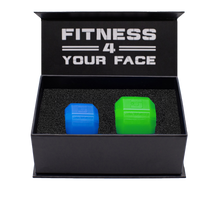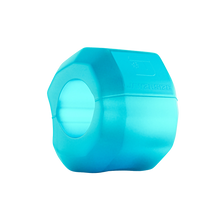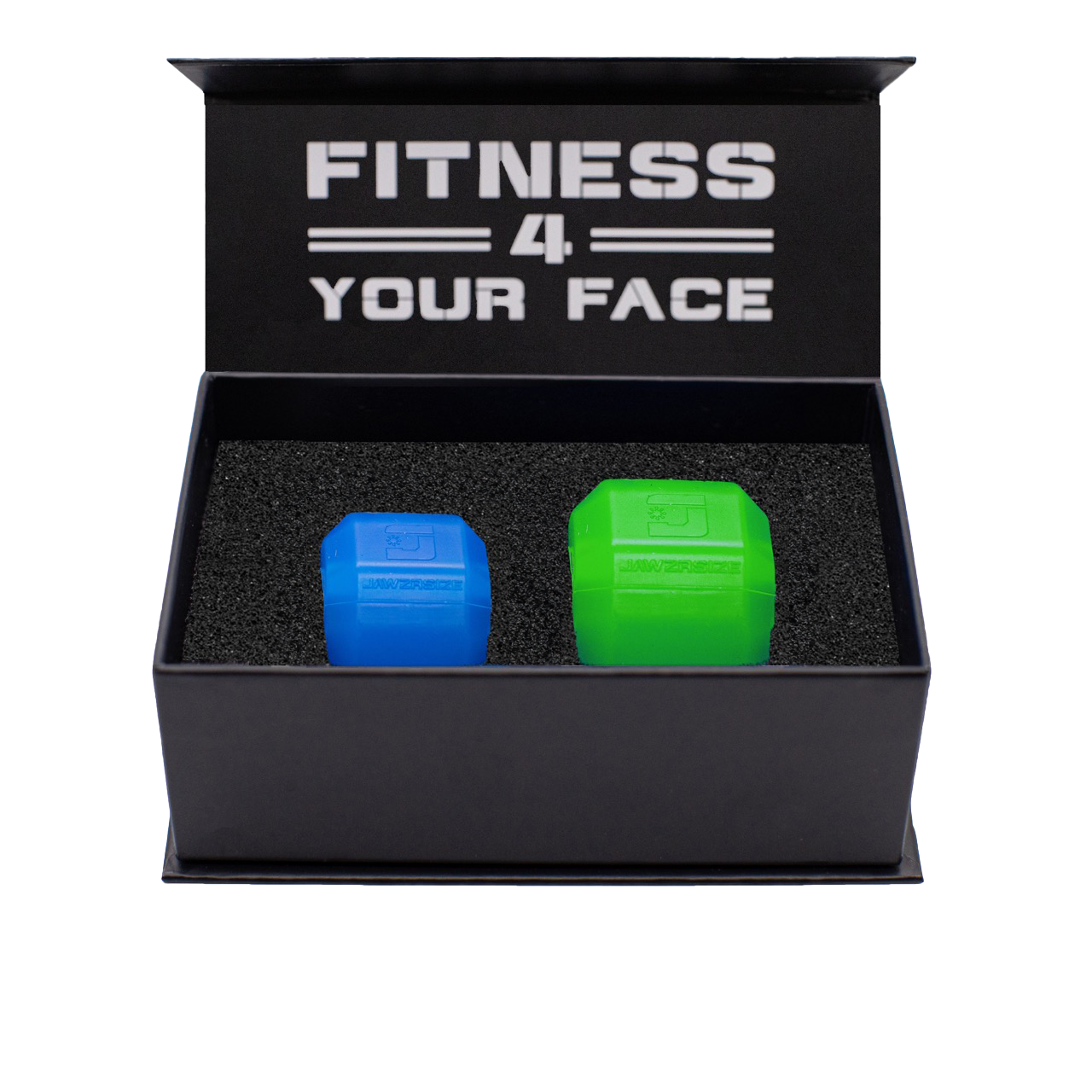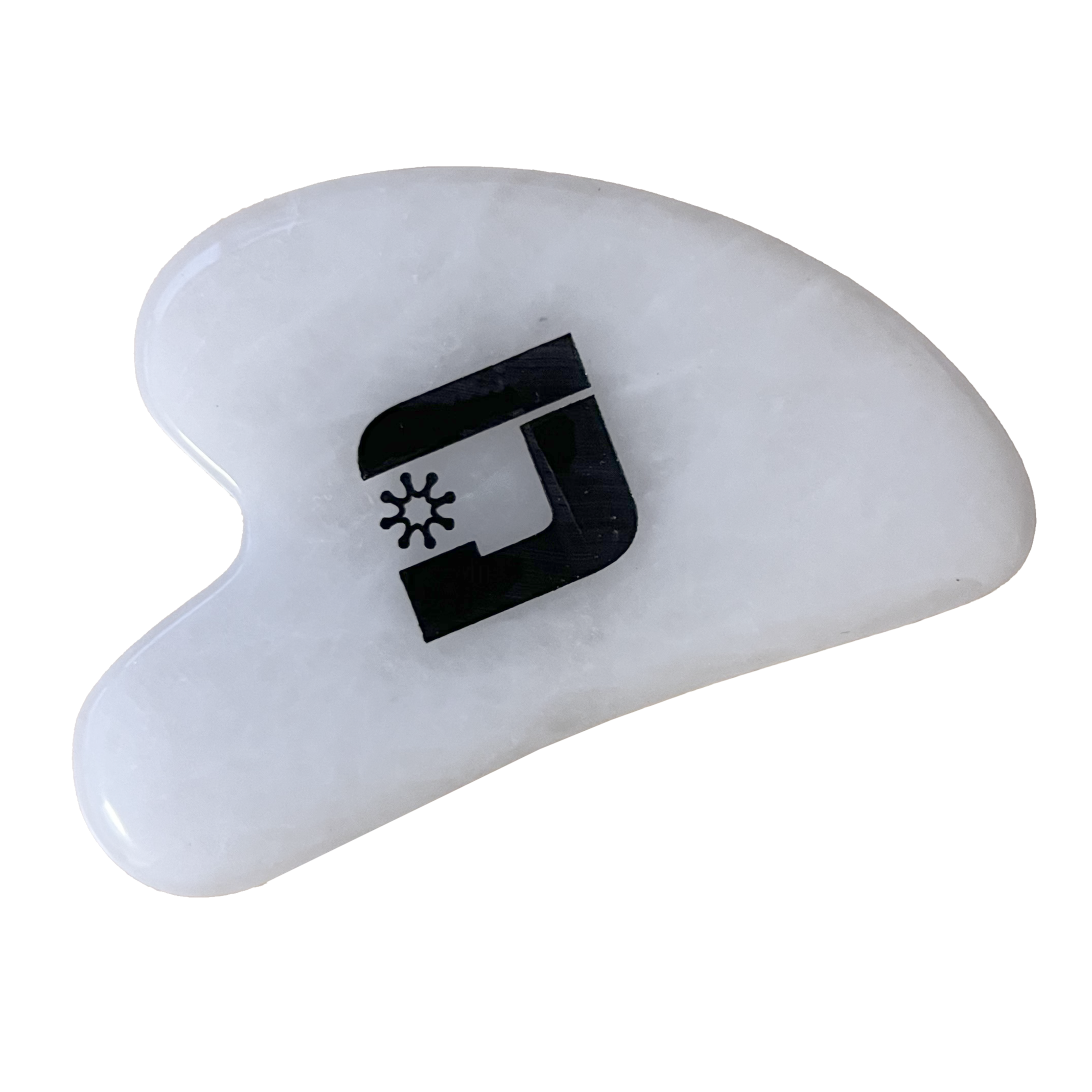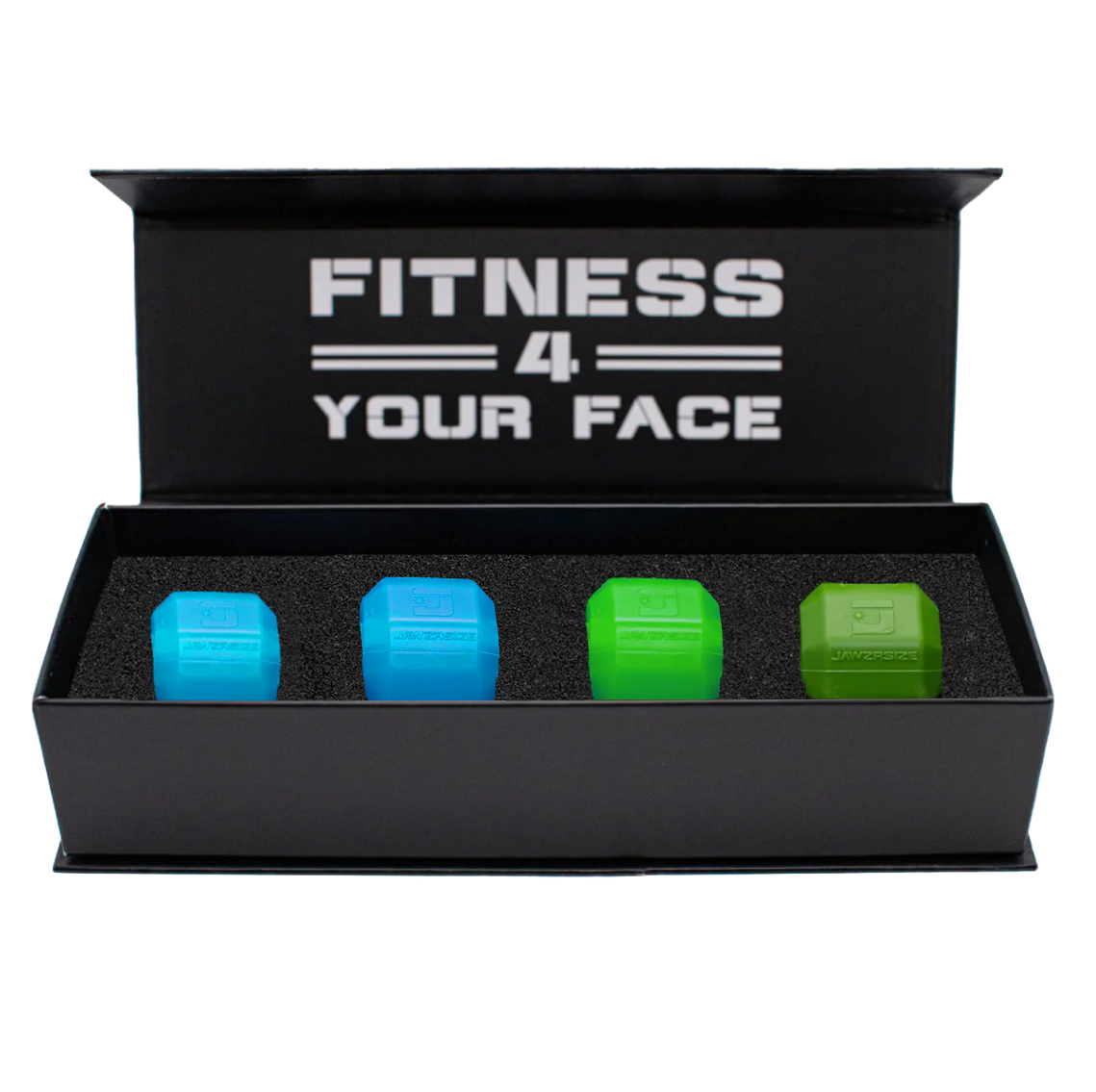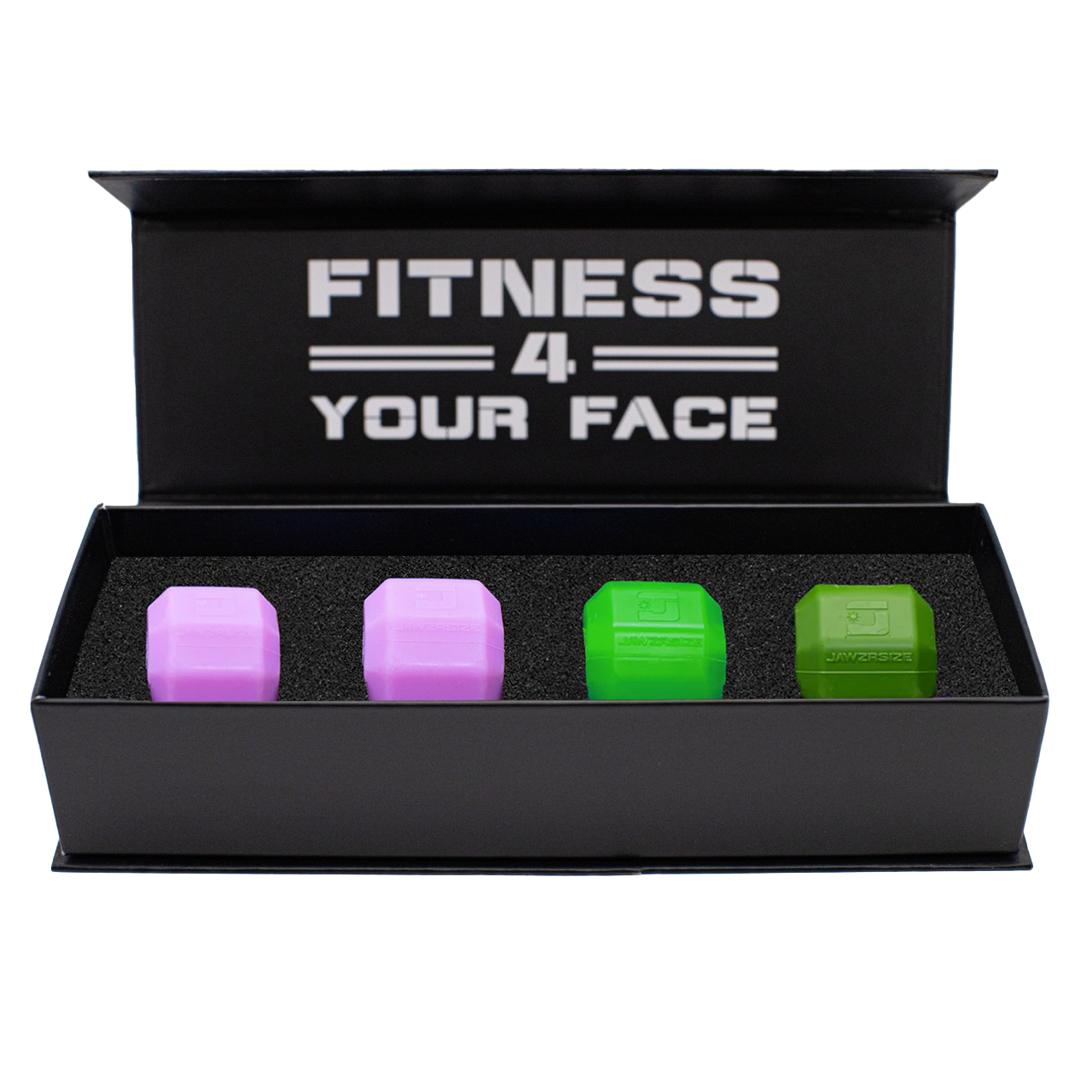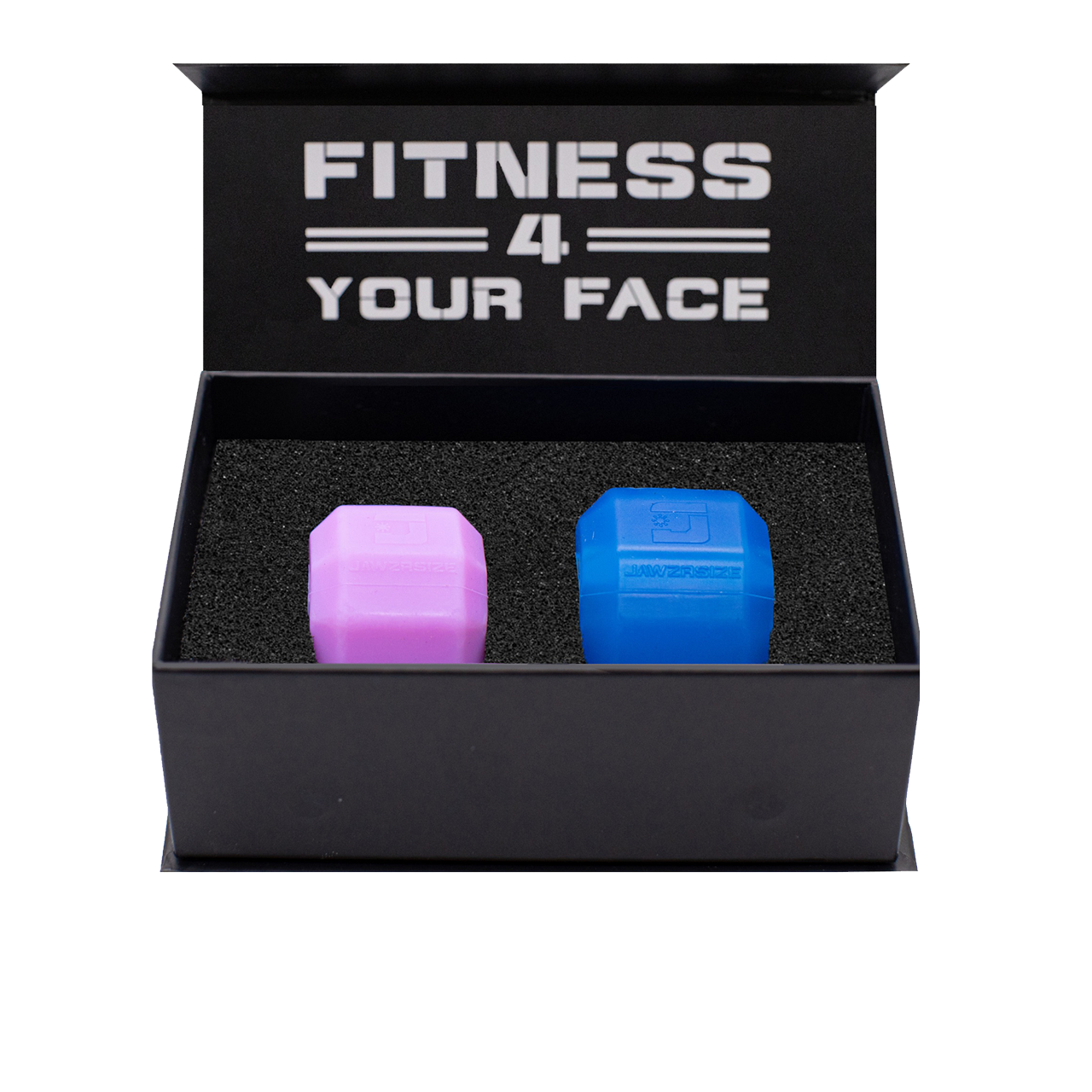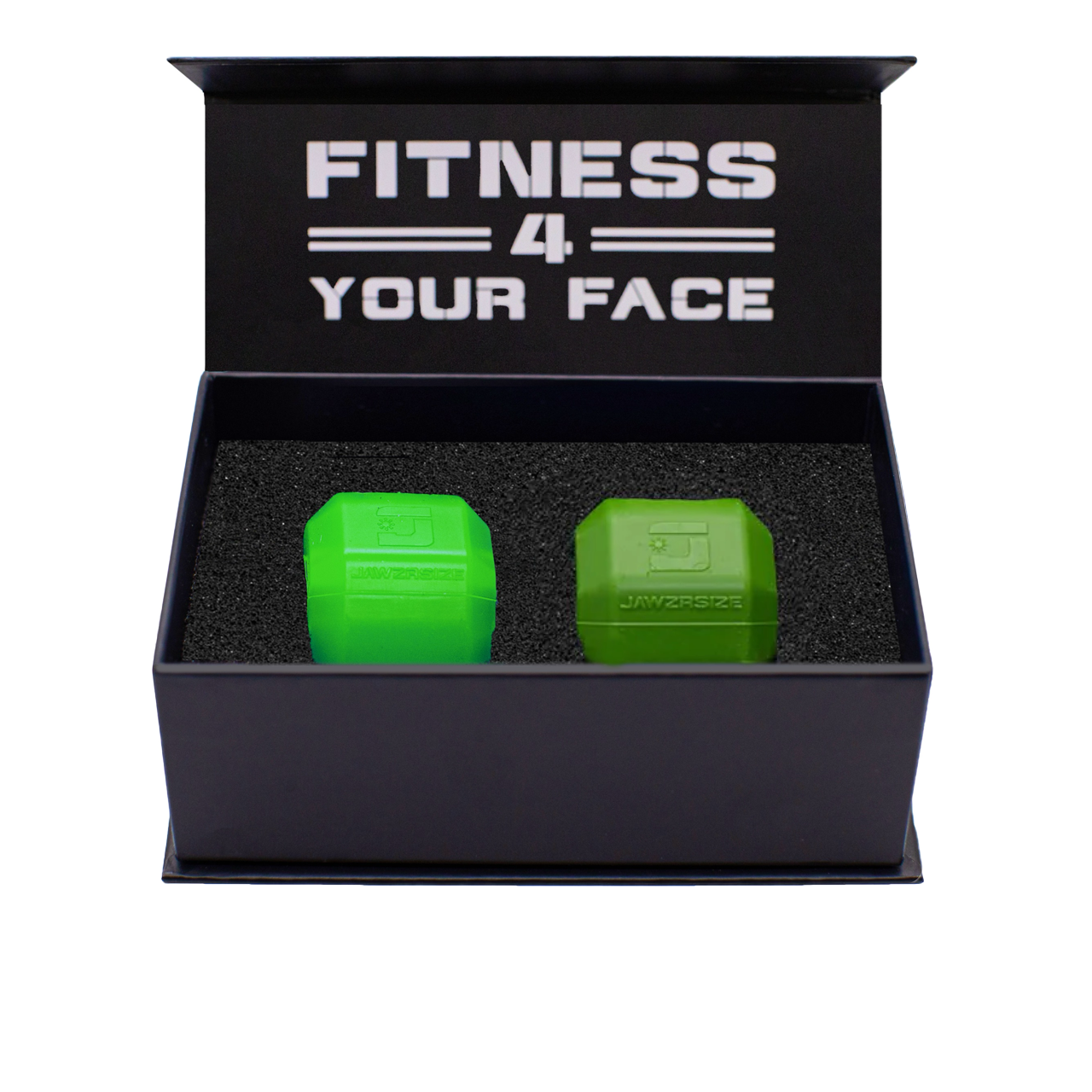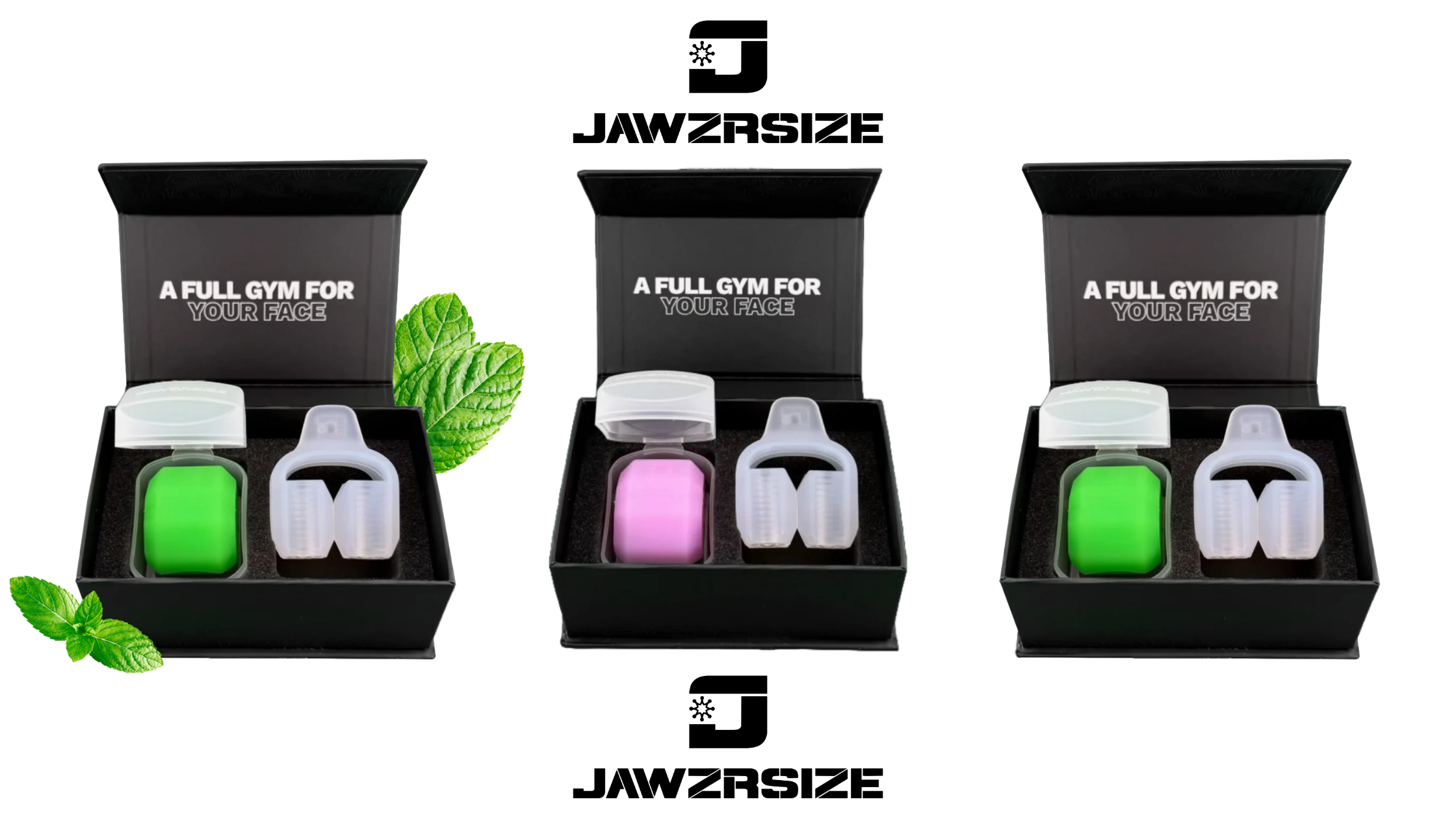If you're active on social media, you may have come across the term "mewing" - a technique that claims to reshape your face through proper tongue posture. Mewing has gained significant traction online, with countless before-and-after photos and testimonials from people who swear by its effectiveness. But what exactly is mewing, and does it live up to the hype?
What is Mewing?
The Theory Behind Mewing
Mewing enthusiasts believe that correct tongue posture can help:
➡️ Reshape the jawline and cheekbones over time
➡️ Improve nasal breathing and overall posture
➡️ Prevent issues like crooked teeth or recessed chins
However, scientific research on mewing is limited, and many orthodontists remain skeptical about its long-term effects, especially for adults.
Mewing is a facial exercise technique that involves placing your tongue against the roof of your mouth and applying gentle pressure. The term "mewing" was coined after British orthodontist Dr. John Mew and his son Dr. Mike Mew, who developed and popularized the technique.
The theory behind mewing is that proper tongue posture can help reshape the face over time, leading to a more defined jawline, better facial structure, and improved breathing. Proponents of mewing claim that by consistently maintaining this tongue posture, you can achieve a more attractive facial appearance without the need for surgery or other invasive procedures. Learn more.
According to the Mews, many modern facial development issues, such as crooked teeth, recessed chins, and breathing problems, can be attributed to improper tongue posture and oral habits. They believe that by correcting these habits through mewing, you can promote proper facial growth and development, even in adulthood.
The mewing technique itself is relatively simple. It involves resting your tongue on the roof of your mouth, with the tip of the tongue placed just behind your front teeth. Your lips should be closed, and you should breathe through your nose rather than your mouth. The idea is to maintain this posture consistently, even while sleeping, to see the best results.
While the concept of mewing has gained significant popularity in recent years, it's important to note that the scientific evidence supporting its efficacy is limited. Many orthodontists and facial development experts remain skeptical about the claims made by mewing enthusiasts, citing a lack of peer-reviewed research and long-term studies.
Want something way more effective than "mewing"? 💪
Add Jawzrsize to your daily routine! Strengthen and relax your facial and neck muscles with the Beginners Bundle & Gua Sha. 🔥
Click now and grab your discount! ⬇️

The Mewing Technique: Step-by-Step
While the concept of mewing may seem simple, properly executing the technique requires attention to detail and consistency. Here's a step-by-step guide to help you get started with mewing:
1️⃣ Rest the Tongue on the Roof of the Mouth
The first step in mewing is to place your tongue on the roof of your mouth. Start by gently pressing the tip of your tongue just behind your front teeth, then slowly slide it back until the entire tongue is resting against the palate. You should feel a slight suction effect as your tongue creates a seal against the roof of your mouth.
It may take some practice to find the correct tongue position, but with time, it will become more natural. If you're unsure whether you're doing it correctly, try making a "clicking" sound with your tongue - if you can do this easily, you're likely in the right position.
2️⃣ Close the Lips and Breathe Through the Nose
Once your tongue is in the correct position, close your lips and breathe through your nose. Mewing emphasizes the importance of nasal breathing, as it promotes proper facial development and can help reduce mouth breathing, which is often associated with poor facial growth.
When your lips are closed, your teeth should be gently touching or slightly apart. Avoid clenching your jaw or grinding your teeth, as this can lead to tension and discomfort.
3️⃣ Maintain Proper Tongue Posture Consistently
The key to seeing results with mewing is consistency. Aim to maintain the proper tongue posture as much as possible throughout the day, even while sleeping. This may be challenging at first, but with practice, it will become a habit.
To remind yourself to mew, you can set periodic alerts on your phone or place sticky notes in frequently visited areas, such as your workspace or bathroom mirror. Over time, mewing will become second nature, and you won't need these reminders.
If you're considering trying mewing, be patient and persistent. While the scientific evidence supporting its efficacy may be limited, there's no harm in adopting proper tongue posture and nasal breathing, as these habits can contribute to better oral and respiratory health.
🤔 Curious about how Jawzrsize works?
🚀 Explore our How To Use page and start your journey TODAY!
Does Mewing Actually Work?
Mewing has gained massive popularity online, with thousands of before-and-after testimonials. However, the scientific community remains divided on its effectiveness.
What Experts Say
➡️ Limited Scientific Evidence: No peer-reviewed studies confirm that mewing permanently reshapes adult facial structure.
➡️ Genetics & Age Matter: Mewing is more likely to influence facial growth in children than in fully developed adults.
➡️ Breathing & Posture Benefits: While jawline transformation is debatable, mewing does encourage better breathing habits and may improve oral health.
So, while mewing may not be a quick fix, practicing correct tongue posture still has potential benefits—just don’t expect a dramatic jawline transformation overnight.
While mewing has gained significant attention on social media, with countless anecdotal success stories and before-and-after photos, the scientific evidence supporting its efficacy is limited. The orthodontic community relies on peer-reviewed research and clinical studies to validate treatments, and mewing has not undergone the rigorous testing required to be considered a proven technique.
One of the main challenges in validating mewing's effectiveness is the fact that adult facial bones are less malleable than those of children. The theory behind mewing suggests that consistent tongue posture can reshape the face over time, but this may be more difficult to achieve in adults whose facial structures are already developed. Genetics, muscle development, and overall bone growth also play significant roles in determining facial structure, making it challenging to attribute changes solely to mewing.
That being said, proper tongue posture can have a positive influence on oral health, particularly in children whose facial structures are still developing. Encouraging nasal breathing and proper tongue placement may help promote better jaw development and alignment, reducing the risk of certain orthodontic issues. However, it's important to note that these benefits are more likely to be seen in younger individuals rather than adults.
It's also worth considering that some of the positive changes attributed to mewing may be the result of other factors, such as weight loss, aging, or general improvements in posture and oral habits. Without controlled studies that isolate mewing as the sole variable, it's difficult to determine the extent of its impact on facial structure.
While mewing enthusiasts may point to anecdotal evidence and personal experiences as proof of its effectiveness, it's important to approach these claims with a critical eye. The human body is complex, and numerous factors contribute to facial development and appearance. Mewing may play a role in promoting proper oral posture and function, but its ability to significantly reshape the face, particularly in adults, remains questionable without further scientific investigation.
If you're interested in exploring the potential benefits of mewing, it's essential to approach the technique with realistic expectations and to consult with a qualified orthodontist or dental professional. They can assess your individual needs and provide personalized guidance on the most appropriate course of action for your oral health and facial development goals.
Look… this technique can be useful for you and will definitely show visible results—just take a photo following the recommendations. 📸 But here’s the thing… Jawzrsize is on a whole different level! It works like a full workout for your face and neck, giving you way better results. 💪
Our products are super easy to use and made from high-quality materials. Plus, we take pride in the fact that Jawzrsize is made in the USA. 🇺🇸 And guess what? We offer different resistance levels and sizes to match your needs!
Got questions? Just ask—we’re happy to help! 😊
The Risks and Limitations of Mewing
While mewing has gained popularity as a natural way to improve facial structure, it's important to be aware of the potential risks and limitations associated with this technique.
1️⃣ Potential Misalignment of Teeth
Constantly pressing your tongue against your teeth can lead to unintended tooth movement over time. This can result in misalignment, affecting the aesthetics of your smile and potentially causing bite issues. Misaligned teeth can lead to difficulties in chewing and increased wear on certain teeth, which may require orthodontic intervention to correct.
2️⃣ Strain on the Temporomandibular Joint (TMJ)
Mewing, especially when done incorrectly or excessively, can put undue stress on the temporomandibular joint, which connects your jaw to your skull. This strain can lead to TMJ disorders, causing pain, difficulty in moving the jaw, and even clicking sounds when opening or closing your mouth. TMJ disorders can be uncomfortable and may require medical or dental treatment to alleviate symptoms.
3️⃣ Gum Recession and Periodontal Issues
Excessive pressure from mewing can also harm your gums. If you apply too much force or do not maintain proper technique, you may experience gum recession, where the gum tissue pulls away from the tooth, exposing more of the tooth or its root. This can increase sensitivity and create spaces for bacteria to thrive, potentially leading to periodontal diseases.
4️⃣ Enamel Wear
The constant pressure and rubbing of your tongue against your teeth during mewing can gradually wear down your tooth enamel. Enamel is the hard, protective outer layer of your teeth, and once it's worn away, it cannot be regenerated. This can leave your teeth more vulnerable to decay, sensitivity, and other dental problems.
To minimize these risks, mew properly under the guidance of a qualified orthodontist or dental professional. They can assess your individual needs and provide personalized advice on how to incorporate mewing into your oral health routine safely and effectively.
Is Mewing Worth Trying?
While mewing encourages better posture and breathing habits, expecting a dramatic jawline transformation may be unrealistic. If you want a proven, time-efficient solution, Jawzrsize is the better option for enhancing jaw definition and facial strength.
🔹 Why wait years for uncertain results? Start your jawline transformation today with Jawzrsize!
👉 Get Your Jawzrsize Kit Now, 15% OFF!
While mewing has gained significant attention on social media platforms, it's important to approach this technique with realistic expectations. The scientific evidence supporting mewing's ability to dramatically reshape facial structure, particularly in adults, is limited. Adult facial bones are less malleable than those of children, making significant changes through tongue posture alone unlikely.
However, adopting proper tongue posture and nasal breathing can contribute to better oral and respiratory health. Maintaining correct tongue placement and engaging in nasal breathing may help promote proper jaw development and alignment in children, potentially reducing the risk of certain orthodontic issues.
If you're considering trying mewing, consult with a qualified orthodontist or dental professional first. They can assess your individual needs and provide personalized guidance on the most appropriate course of action for your oral health and facial development goals. Attempting to alter your facial structure or dental positioning without professional supervision may lead to unintended consequences, such as misaligned teeth or jaw discomfort.
Rather than relying solely on mewing, focus on evidence-based methods for achieving a healthy, beautiful smile. Maintain good oral hygiene practices, such as regular brushing and flossing, and visit your dentist for routine check-ups and cleanings. If you have concerns about your facial appearance or jaw alignment, discuss these with your orthodontist, who can recommend proven treatments tailored to your specific needs.
For those interested in facial exercises to improve muscle tone and definition, consider exploring targeted tools designed for this purpose. Facial exercise devices that have undergone clinical testing and shown proven results can offer a more reliable and effective solution for strengthening and sculpting facial muscles. Read the full study here!
🔊 Find out here how Jawzrsize works to strengthen your jaw!
If you're looking for a more reliable option to improve facial aesthetics and strength, consider Jawzrsize. Unlike mewing, Jawzrsize offers clinically tested results and a targeted approach to facial muscle strengthening. Unleash your facial fitness anytime, anywhere with the Jawzrsize Kits — your perfect companion for on-the-go workouts!
Alternatives to Mewing for Facial Aesthetics
If you’re looking for faster, more reliable results, consider these alternatives:
✅ Jawzrsize: Strengthens jaw muscles with proven resistance training
✅ Orthodontic Treatments: Braces or aligners can correct structural imbalances
✅ Facial Exercises: Techniques that target facial muscles for toning
✅ Professional Advice: A specialist can recommend personalized solutions
Among these options, Jawzrsize stands out as a scientifically backed method for jawline enhancement.
While mewing has gained popularity as a DIY method for improving facial aesthetics, it's not the only option available. If you're looking for safe and effective ways to enhance your facial appearance, consider these alternatives:
Consulting with a licensed orthodontist is a great first step. They can assess your individual needs and provide personalized advice and treatment plans tailored to your specific goals. Orthodontists have the expertise and knowledge to recommend the most appropriate course of action, whether it's through traditional orthodontic treatments or other evidence-based methods.
Facial exercises designed to target specific muscles can also be an effective way to improve facial tone and definition. These exercises focus on strengthening and toning the muscles in your face, which can help to create a more sculpted and youthful appearance. Learn more about it!
✅ 7 Face Exercises for Sagging Cheeks provides a comprehensive guide to exercises that can help lift and firm the cheek area, a common concern for many people seeking to improve their facial aesthetics.
✅ If you're interested in natural methods for addressing sagging cheeks, How to Fix Sagging Cheeks Naturally offers a variety of tips and techniques you can incorporate into your daily routine. From facial massage to lifestyle changes, this guide explores different approaches to improving the appearance of sagging cheeks without resorting to invasive procedures.
Remember, when it comes to your facial health and aesthetics, it's always best to seek professional guidance from a qualified orthodontist or dental professional. They can help you navigate the various options available and recommend the most suitable path forward based on your individual needs and goals.


Mewing vs. Jawzrsize: Which is More Effective?
While mewing relies on passive tongue posture, Jawzrsize is an active facial exercise tool designed to strengthen jaw muscles and improve facial definition.
|
Feature |
Mewing |
Jawzrsize |
|
Scientific Evidence |
❌ No clinical proof |
✅ Clinically tested |
|
Time Required |
⏳ Months to years |
⏱️ 10-15 min/day |
|
Effectiveness |
❓ Uncertain for adults |
✅ Proven muscle activation |
|
Ease of Use |
🔹 Requires awareness 24/7 |
🔥 Quick & structured workouts |
|
Results |
🚨 Minimal for most adults |
💪 Visible improvement in jawline |
Which is the better choice? Let’s take a closer look at how Jawzrsize actually works and why it may be a more effective solution.
How Does Jawzrsize Work?
Unlike mewing, Jawzrsize is a scientifically backed device that helps activate and strengthen facial muscles.
Jawzrsize Key Benefits:
✔ Targets 57+ muscles in the jaw, face, and neck
✔ Provides visible results in weeks (instead of years)
✔ Portable and easy—just 10-15 minutes per day
How to Use Jawzrsize Effectively:
1️⃣ Place Jawzrsize in your mouth and bite down gently
2️⃣ Engage your jaw muscles by repeatedly biting with controlled resistance
3️⃣ Complete short workouts (10-15 minutes per day) for noticeable jawline definition
💡 Want a stronger, sculpted jawline? 👉 Try Jawzrsize Today
While mewing has gained popularity on social media, it's important to consider alternative facial exercise methods that have undergone clinical testing and shown proven results. One such option is Jawzrsize, a patented jaw exerciser designed to target and strengthen the muscles of the face, neck, and jaw.
Unlike mewing, which lacks substantial scientific evidence, Jawzrsize has been clinically proven to be effective in improving facial muscle strength and tone. The device offers a targeted approach, engaging over 57 muscles in the face and neck with each use. This comprehensive workout helps to define the jawline, reduce the appearance of a double chin, and promote a more youthful, sculpted appearance.
In addition to its aesthetic benefits, Jawzrsize can also provide functional improvements, such as relieving tension and pain associated with temporomandibular joint (TMJ) disorders. By strengthening the jaw muscles and improving overall facial posture, Jawzrsize can help alleviate symptoms of TMJ and promote better oral health.
Jawzrsize is easy to incorporate into your daily routine, with recommended usage of just 10-15 minutes per day. The device is portable and convenient, allowing you to perform your facial exercises anytime, anywhere. With consistent use, you can expect to see noticeable results in facial muscle tone and definition within a few weeks to a few months.
When comparing mewing and Jawzrsize, it's clear that Jawzrsize offers a more reliable and effective solution for those seeking to improve their facial appearance and muscle strength. With its clinical backing, targeted approach, and proven results, Jawzrsize stands out as a superior choice for anyone looking to transform their face through facial exercises.
Frequently Asked Questions
|
Question |
Answer |
What is mewing and how does it work? |
Mewing is a technique that involves pressing the tongue against the roof of the mouth to improve jawline definition and breathing. |
Does mewing actually change your face? |
There are anecdotal claims that mewing can alter facial structure, but scientific evidence is limited. |
How long does it take for mewing to work? |
Results vary—some claim minor changes in months, but significant transformations (if any) take years. |
Can adults benefit from mewing? |
Some believe adults can still see benefits, though it may be more effective in younger individuals. |
Is mewing scientifically proven? |
Mewing lacks strong scientific backing, but some experts suggest it may aid in oral posture and breathing. |
What are the benefits of mewing? |
Potential benefits include improved facial symmetry, enhanced jawline definition, and better breathing. |
How do you properly mew step by step? |
Proper mewing involves placing the entire tongue against the roof of the mouth, keeping lips sealed, and breathing through the nose. |
What happens if you do mewing incorrectly? |
Incorrect mewing (e.g., only pressing the tip of the tongue) may lead to jaw tension or discomfort. |
Can mewing fix a weak chin? |
Mewing alone is unlikely to fix a weak chin, but it may contribute to improved jaw positioning over time. |
Does mewing work for jawline definition? |
It may contribute to a more defined jawline, but results depend on various factors including genetics. |
Are there any risks associated with mewing? |
Potential risks include jaw tension, incorrect application, and unrealistic expectations of results. |
Mewing vs. chewing gum – which is better? |
Chewing gum strengthens jaw muscles actively, while mewing focuses on posture; both may have benefits. |
Can mewing improve breathing and posture? |
Yes, mewing may help improve nasal breathing and promote better posture over time. |
Do orthodontists recommend mewing? |
Most orthodontists do not endorse mewing due to the lack of scientific research supporting its effectiveness. |
How do I know if I’m mewing correctly? |
Proper mewing should feel natural, with the tongue fully resting on the roof of the mouth and no tension in the jaw. |
What does mewing mean? |
Mewing is a technique that involves pressing the tongue against the roof of the mouth to improve jawline definition and breathing. |
How long does mewing take to work? |
Results vary—some claim minor changes in months, but significant transformations (if any) take years. |
Is Jawzrsize better than mewing? |
Yes—Jawzrsize provides faster, scientifically tested results by actively strengthening jaw muscles, unlike passive mewing. |

